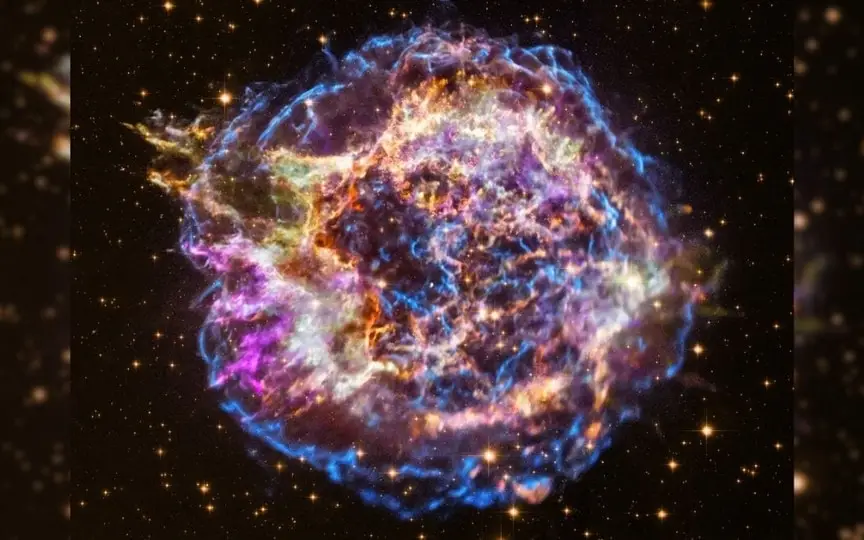NASA Uncovers Supernova Mysteries with IXPE Telescope
The Universe has witnessed some of the most awe-inspiring events in space, with supernovas being among the most remarkable. These massive occurrences are even more astonishing due to their immense scale. However, a groundbreaking revelation has emerged from NASA’s Imaging X-ray Polarimetry Explorer (IXPE) telescope, shedding light on the long-standing mysteries surrounding the historic supernova remnant, SN 1006. Through its unique polarized X-ray images, the telescope has provided insight into the enigmatic relationship between magnetic fields and the movement of high-energy particles emitted by exploding stars.
Dr. Ping Zhou, an astrophysicist at Nanjing University in Jiangsu, China, and lead author of a recent paper in The Astrophysical Journal, expressed his excitement about the findings. He stated: “Magnetic fields are very difficult to measure, but IXPE gives us a powerful way to study them. Now we can see that SN 1006’s magnetic fields are turbulent, but also have an organized direction.
SN 1006: Celestial Time Capsule
Located 6,500 light-years away in the constellation Lupus, SN 1006 is the only remnant of the huge explosion first seen by mankind back in 1006 AD. This explosion, theorized to be either the merger of two white dwarfs or a white dwarf cleaning up a companion star, was visible to observers across China, Japan, Europe and the Arab world for years. Modern astronomers consider it the brightest stellar event on record.
While scientists have long wondered about SN 1006’s unusual twin structure, which differs from other globular supernova remnants, they have also identified bright “limbs,” or edges, that can be seen in X-ray and gamma-ray spectra. Douglas Swartz, a scientist at NASA’s Marshall Space Flight Center, explained, “Nearby, X-ray bright supernova remnants like SN 1006 are ideal for IXPE measurements because IXPE combines X-ray polarization sensitivity with the ability to spatially resolve emission regions.”
IXPE’s vision reveals the cosmic mysteries
Previous X-ray observations of SN 1006 provided the first evidence that supernova remnants can significantly accelerate electrons. These observations identified rapidly expanding nebulae around exploded stars as the birthplaces of highly energetic cosmic rays capable of traveling at nearly the speed of light.
Researchers had hypothesized that SN 1006’s unique structure was related to the orientation of its magnetic field, suggesting that supernova blast waves aligned northeast and southwest with the direction of the magnetic field could more effectively accelerate high-energy particles. Recent revelations from IXPE have now confirmed and clarified these theories, highlighting the reliability and robustness of the telescope.
The data confirm a correlation between magnetic fields and the outflow of high-energy particles from the remnant. Despite the somewhat perturbed magnetic fields in SN 1006’s crust, they still have a favorable direction. As the shock wave from the initial explosion travels through the surrounding gas, magnetic fields align with its motion and bind the charged particles. These particles subsequently receive bursts of acceleration that maintain the strength of the magnetic fields and the turbulence.
As researchers dig deeper into the IXPE data, their understanding of how particles are accelerated in extreme celestial bodies will evolve.




